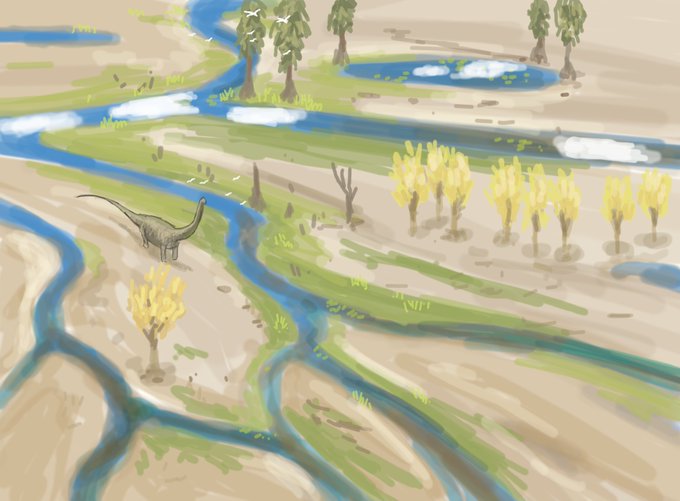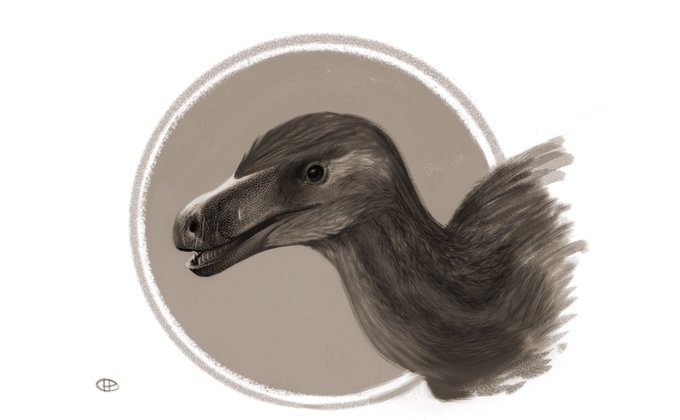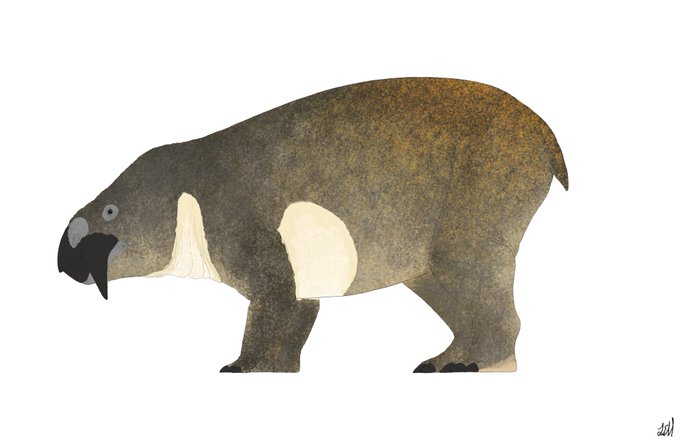#paleontologyのTwitterイラスト検索結果。 1,124 件中 50ページ目
Rising star Alix Prybyla's first-authored study on the bite capability of Leptarctus, extinct 'tanks' among weasel-kind. Work done from her #REU + internship in our research team! https://t.co/TTiW27zr2S Artwork: N. Wong/AMNH. #fossilfriday #openaccess #biomechanics #paleontology
Sometimes you just gotta ask yourself...if I don't make a super spiny Trilophosaurus, who will? #paleoart #paleontology #sciart #scientificillustration #wip #allokotosauria
The memes with these 2 write themselves, folks. #Azendohsaurus #Shringasaurus #paleoart #paleontology #fossils #sciart #scientificillustration
In order: Azendhosaurus skeletal from the Nesbitt et. al monograph. Shringasaurus skeletal from Saradee Sengupta & colleagues. And Ashley's skeletal #paleontology #fossils #paleo #sciart #scientificillustration
We have a new dude walking in the #Upper #Cretaceous of #Spain. Welcome to #Pareisactus evrostos. This new taxon were recovered as a member of Rhabdodontida. Congrats @AlbertPrietoMa1 #dinosaurs #españa #science #paleontology
Results from the landscape #paleostream!
Nemegt in winter, Solnhofen , African rift valley, Messinian crisis...
#paleoart #sciart #paleontology #dinosaurs #landscape
Final for #Raphus cucullatus (The Dodo)
#dodo #bird #pigeon #holocene #paleo #paleontology #paleoart #sciart #science #educational #naturalhistory #extinction #extinctanimals #digitalart #digitalillustration #illustration #art #painting #drawing #maineart #artistsontwitter
The Winged Giant That Was Bigger Than Tyrannosaurus Rex #science #paleontology https://t.co/GerH2x43zG
The size and color of this crest is speculative, but I'm pretty happy with it. Perhaps the vibrance is influenced by how much carotenoids an individual consumes, as is the case w/ flamingos. #Cycnorhamphus #paleontology #paleoart #pterosaurs #sciart #scientificillustration
Line drawing of the Jurassic #pterosaur Cycnorhamphus. I really like how this is turning out so far, I forgot how much fun the textures of pterosaurs can be once you get past the nightmare of proportions & posing. #paleoart #paleontology #sciart #scientificillustration
A admirer of U-Haul graphics asked me about the details that went into even the smallest areas in each graphic. #paleontologist #paleontology #panda #redpanda #science #illustrator #adobeillustrator #Tennessee #fossils #excavations #illustration #vectorart #vector #vehiclewrap
A portrait of a young female #velociraptor that we have decided to let in the compound to take care of a small #mesozoic mammal infestation. The #scientist have affectionally named her #Ginger because Ginger snaps. #dinosaur #paleontology #illustration
The integument & length of the tusks are speculative, & for the coloration I looked at some living animals and ended up way too close to them (not gonna say which though, lol). I like the unintentional metallic flavor it's got though #paleoart #Lisowicia #paleontology #sciart
A more #avian version of my #Plateosaurus Picture. I felt the old one looked too reptilian. #dinosaur #prehistoric #paleontology #triassic #paleoart #illustration
Unscience an animal?
The unscienced Jeholosaurus
#UnscienceAnAnimal #jeholosaurus #anatomy #paleontology
Line drawing of that most labyrinthian of ammonites, the Cretaceous Nipponites. I tried to go for a unique appearance for the soft tissue, and ended up with this vaguely octopus-looking, stalk-eyed form that's doing...something with its tentacles. #paleoart #sciart #paleontology
R is for rhynchosaur.
Rhynchosaur was a reptilian parrot beaked pig from the Triassic that ate mainly tubers and roots. (not literally a pig, but a fat lizard none the less)Illustration for @AnimalAlphabets extinct series.
#AnimalAlphabets #paleoart #paleontology #illustration
Seems like every new find (or rumor of a new find) indicates a different skin type, so I bet they were very diverse and had structures and textures that don't directly match up to any living animals. #paleontology #sciart #scientificillustration #inostrancevia







































